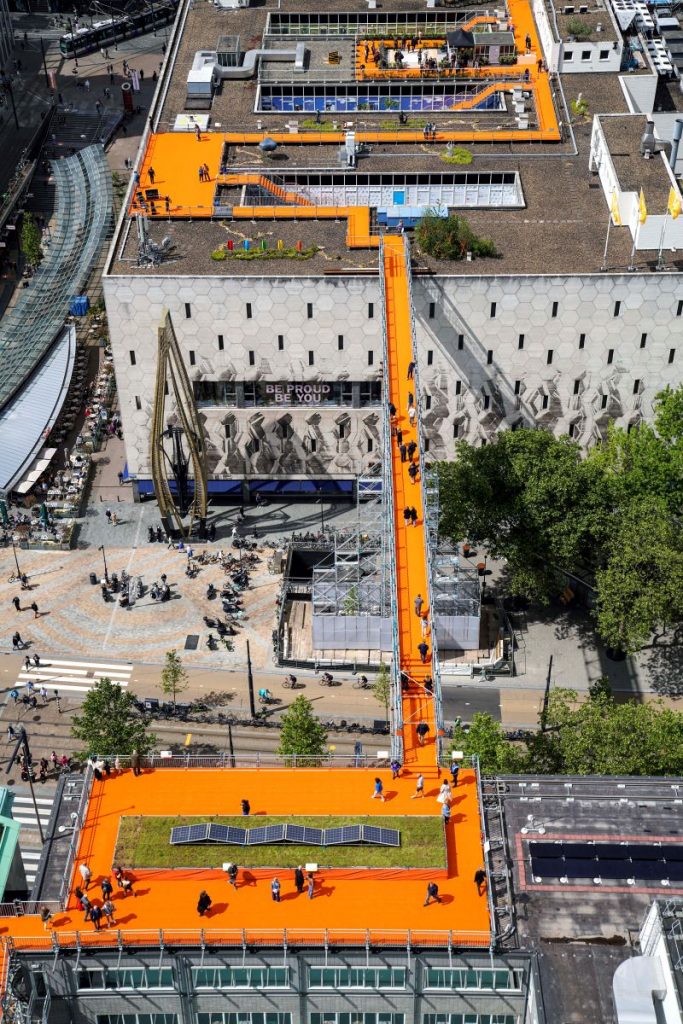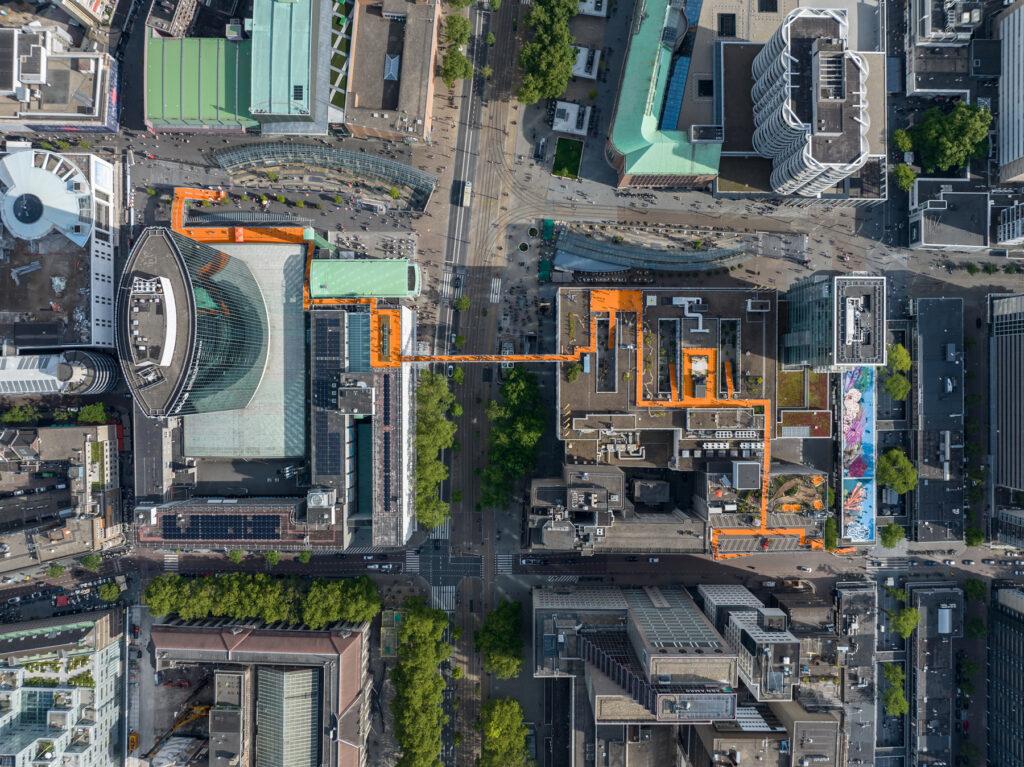

Author Daniele Menichini
What will be the future of our cities? This is one of the questions we ask ourselves most often when we think about what our living conditions will be like as time goes by.
The question however, should change and shift to what cities will be like in the near future due to climate change. Ideas and thoughts are many and range from the 15 minute city of the Parisian model to the Arabian line in the desert, from the timidity of regeneration and reuse of spaces.
In this search for possible futures, I came across a very interesting project that sees the city in layers and identifies roofs as a place for new soil to be used for development, conversion, socialisation and which at the same time becomes an energy community or one of the possible alternatives mapped out in MVRDV based on the example of Rotterdam in the Netherlands.

Where did the idea of using roofs as a new urban layer come from?
Density has been a fascination of MVRDV since the start. It was natural to look up to these empty spots on top of our buildings. Activating a vacant rooftop through a residential addition, similar to what MVRDV did with Didden Village in 2006, can create affordable space and help with the housing crisis. Green rooftops can help counteract climatic issues such as urban heat islands or flood risks. Photovoltaic panels will increase energy production.
READ ALSO:
So, we see a wide range of potentials there. The next steps included temporary activations, such as the Stairs to Kriterion in 2016, and the Rotterdam Rooftop Walk and The Podium in 2022. Around the same time MVRDV published the Rooftop Catalogue, which presents a series of ideas with the intention of sparking people’s imaginations on a larger scale. The most recent step is RoofScape, which asks what happens if we zoom out and look at the big picture of the city: what can be achieved on the urban scale? Which urgencies can we address and by how much?
Can we go deeper into the project talking about the tool developed by MVRDV?
Roofscape is an open-source digital design and knowledge-sharing software. Initially developed in collaboration with the municipality of Rotterdam and SuperWorld, RoofScape envisions the potential for the sustainable and resilient devel- opment of a city’s underused urban rooftop spaces. By integrating open datasets such as building function, age, energy label, or urban flood risks, the software suggests appropriate uses for each rooftop in the city, depending on priorities that can be set by the user. The RoofScape application also predicts the resulting impacts how much energy can be generated, how many square kilometers of parks can be added, how many new apartments?
RoofScape provides a complement to the qualitative initiatives such as the Rooftop Catalogue: where these communicate the dream of individual rooftop uses, RoofScape looks at a broader scale. It doesn’t dictate a singular vision of an “ideal” city, but rather allows users to understand the impacts of different public policies and priorities. It therefore serves as a comprehensive tool for policymakers, urban planners, and citizens, bridging the gap between speculative ideas and real-world applications.

How can this project help achieve the SDG’s of the 2030 UN agenda?
By leveraging a broad set of open data to test the impact of design decisions before implementation, it helps to address the sustainable cities and communities goal (SDG 11). It also facilitates densification of cities over expansion, reducing land consumption, which is one of the key indicators for the same goal. Climate action (SDG 13) is addressed in a number of ways, from the reduced carbon emissions enabled by rooftop photovoltaics to urban cooling caused by the water retention of green roofs.

These added elements also impact their respective SDGs such as clean energy production and biodiversity. Again, the key insight provided by RoofScape can help to streamline the addition of these elements to our cities.
Do you think this project could impact other cities and become a way of thinking about the cities of the future?
While we initially needed Rotterdam as a test-site, the ambition has always been to design a scalable tool and process that can be transferred to other contexts. Since the types of urban data that are available differ from city to city, the methodology behind RoofScape is designed to operate on varying levels of information. We are in the process of scaling the initiative up across the Netherlands and are planning to bring RoofScape to more cities abroad in the near future.
Beyond the scope of RoofScape, we are convinced that we need to think in similar ways to respond to crises in biodiversity, housing, energy, and climate resilience. To discuss future scenarios collectively and prioritise decisions, open protocols and inclusive methods are needed. This is also the main reason we decided to make the project open source.
Author Daniele Menichini SEED MAGAZINE 02




